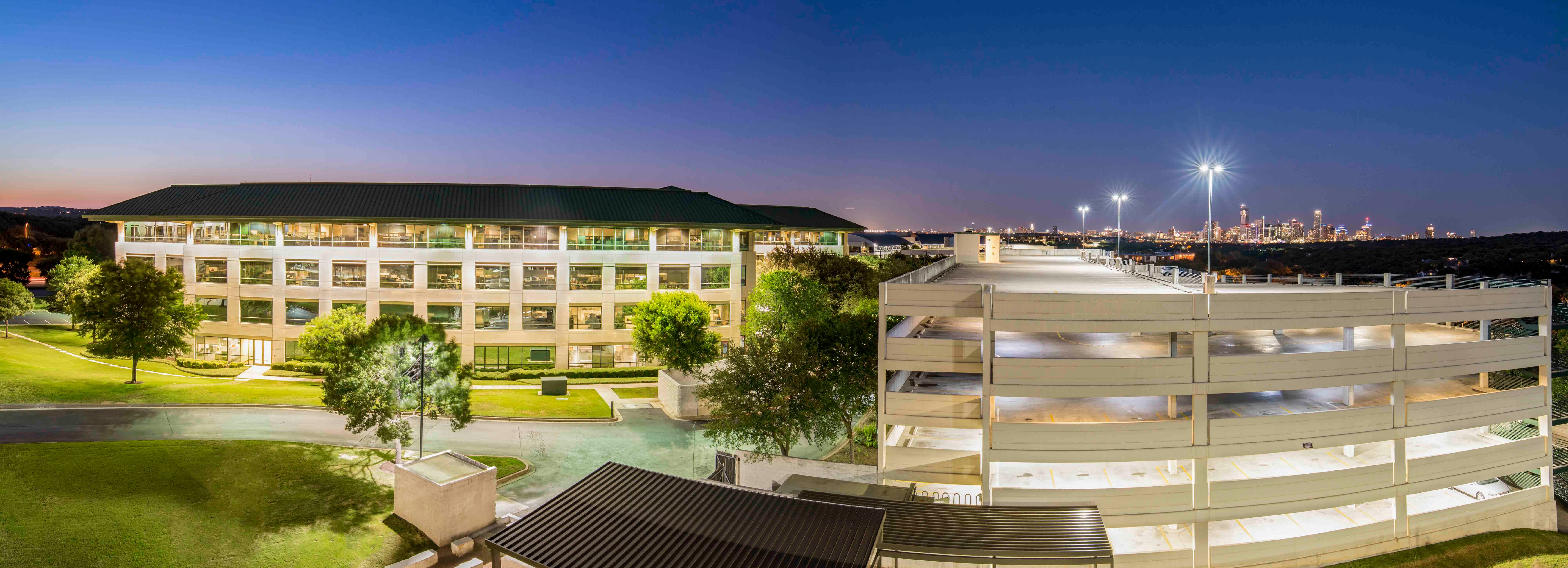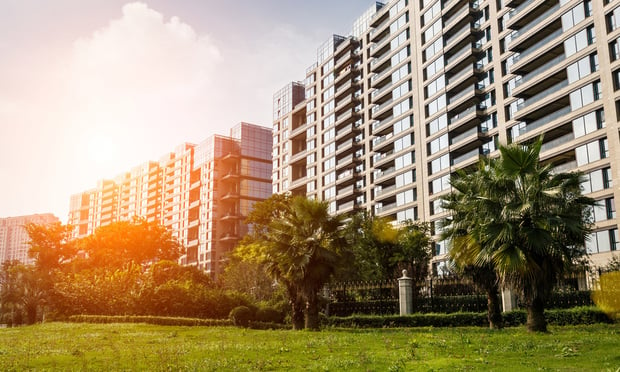 AUSTIN, TX—According to the quarterly REOC Austin survey of more than 38.1 million square feet of industrial properties, less than 1.83 million square feet is currently vacant which translates into an incredibly tight citywide vacancy rate of 4.8%. The current vacancy rate is down from 6.4% last quarter and 9.1% recorded in the same quarter a year ago. Looking back just six years ago, vacancy peaked in June 2010 at nearly 24% with roughly 9 million square feet of darkened space. The market has not recorded such a tight vacancy rate since the mid-90s when the market was only half the size it is today. “The booming local economy continues to fuel demand for industrial space,” says Bob Springer , associate vice president at REOC Austin. According to the Texas Workforce Commission , the Austin-Round Rock metro area added 38,400 new jobs during the past 12 months ending June which equates to an annual growth rate of 4%. Essentially, Austin is operating at full employment with a reported unemployment rate of 3.3%, which compares favorably to the Texas rate of 4.8% and the US rate of 5.1%. For all practical purposes, the Austin industrial market is full. In fact, Jerry Heare , senior vice president, REOC Austin, says, “the market is the tightest it has ever been in our 30-year history of tracking local industrial lease space.” New leases and expansions generated 671,992 square feet of positive net absorption in the second quarter with gains being equally distributed between warehouse and service center/flex product. In all, gains in the second quarter pushed the year-to-date total to 962,713 at mid-year. “The pace of absorption is expected to slow in the second half of the year due to the lack of available space and scarcity of new supply coming online over the next six months,” says Mark Milstead , senior vice president, industrial services, REOC Austin. At this rate, demand is far outpacing new supply. New construction delivered only one 72,000-square-foot building in the second quarter, MetCenter II , building 12. The southeast service center/flex building came online 33% leased to State of Texas (24,000 square feet). Strong demand and pre-leasing success have stimulated additional development. Springer tells GlobeSt.com: “Landlords of Austin-area industrial properties are firmly in the driver's seat and likely to maintain the upper hand through the end of the year, despite roughly 3 million square feet of new industrial space moving through the development pipeline.” In the near term, building 13 (136,000 square feet) at Expo Business Park will deliver in the third quarter and Heritage Crossing 4 (80,400 square feet) and five buildings at Burleson Business Park (189,000 square feet) are set to deliver in the fourth quarter. “Given the tightness of the market, timing of delivery and the fact that some of the space under construction is already pre-leased, the market is not expected to see a significant spike in vacancy when new product arrives,” Springer says. At the close of the second quarter, the citywide warehouse vacancy rate squeezed down to an incredibly tight 3.8%, which is down from 5.1% last quarter and 7.5% recorded a year ago. Similarly, the citywide vacancy rate among service center/flex properties dropped to 6.8% from 9.1% last quarter and 12.1% in the second quarter of 2015. “The lease space moving through pipeline in various stages of planning, permitting, funding and construction will impact the market over the next 24 months but, assuming the economy remains strong, developers will be hard pressed to close the gap between supply and demand,” says Springer. Constrained supply and sustained demand continue to put upward pressure on rental rates. The cost of renting office warehouse space currently ranges between $0.60 and $0.85 per square foot per month on a triple net basis while the price for bulk warehouse ranges between $0.45 to $0.70 and $0.65 to $0.90 for manufacturing space. Among service center/flex properties, asking rental rates range between $0.80 and $1.25 per square foot per month. Clearly, it is a landlord's market with very little advantage for the normal three- to five-year tenant. “Given the market's strong fundamentals, tenants should expect rental rates to continue to climb through the remainder of the year,” Heare warns. Statistics are based on the survey of industrial buildings in all major industrial parks and developments, as well as other Austin area industrial buildings 20,000 square feet or larger. These figures do not include owner-occupied buildings.
AUSTIN, TX—According to the quarterly REOC Austin survey of more than 38.1 million square feet of industrial properties, less than 1.83 million square feet is currently vacant which translates into an incredibly tight citywide vacancy rate of 4.8%. The current vacancy rate is down from 6.4% last quarter and 9.1% recorded in the same quarter a year ago. Looking back just six years ago, vacancy peaked in June 2010 at nearly 24% with roughly 9 million square feet of darkened space. The market has not recorded such a tight vacancy rate since the mid-90s when the market was only half the size it is today. “The booming local economy continues to fuel demand for industrial space,” says Bob Springer , associate vice president at REOC Austin. According to the Texas Workforce Commission , the Austin-Round Rock metro area added 38,400 new jobs during the past 12 months ending June which equates to an annual growth rate of 4%. Essentially, Austin is operating at full employment with a reported unemployment rate of 3.3%, which compares favorably to the Texas rate of 4.8% and the US rate of 5.1%. For all practical purposes, the Austin industrial market is full. In fact, Jerry Heare , senior vice president, REOC Austin, says, “the market is the tightest it has ever been in our 30-year history of tracking local industrial lease space.” New leases and expansions generated 671,992 square feet of positive net absorption in the second quarter with gains being equally distributed between warehouse and service center/flex product. In all, gains in the second quarter pushed the year-to-date total to 962,713 at mid-year. “The pace of absorption is expected to slow in the second half of the year due to the lack of available space and scarcity of new supply coming online over the next six months,” says Mark Milstead , senior vice president, industrial services, REOC Austin. At this rate, demand is far outpacing new supply. New construction delivered only one 72,000-square-foot building in the second quarter, MetCenter II , building 12. The southeast service center/flex building came online 33% leased to State of Texas (24,000 square feet). Strong demand and pre-leasing success have stimulated additional development. Springer tells GlobeSt.com: “Landlords of Austin-area industrial properties are firmly in the driver's seat and likely to maintain the upper hand through the end of the year, despite roughly 3 million square feet of new industrial space moving through the development pipeline.” In the near term, building 13 (136,000 square feet) at Expo Business Park will deliver in the third quarter and Heritage Crossing 4 (80,400 square feet) and five buildings at Burleson Business Park (189,000 square feet) are set to deliver in the fourth quarter. “Given the tightness of the market, timing of delivery and the fact that some of the space under construction is already pre-leased, the market is not expected to see a significant spike in vacancy when new product arrives,” Springer says. At the close of the second quarter, the citywide warehouse vacancy rate squeezed down to an incredibly tight 3.8%, which is down from 5.1% last quarter and 7.5% recorded a year ago. Similarly, the citywide vacancy rate among service center/flex properties dropped to 6.8% from 9.1% last quarter and 12.1% in the second quarter of 2015. “The lease space moving through pipeline in various stages of planning, permitting, funding and construction will impact the market over the next 24 months but, assuming the economy remains strong, developers will be hard pressed to close the gap between supply and demand,” says Springer. Constrained supply and sustained demand continue to put upward pressure on rental rates. The cost of renting office warehouse space currently ranges between $0.60 and $0.85 per square foot per month on a triple net basis while the price for bulk warehouse ranges between $0.45 to $0.70 and $0.65 to $0.90 for manufacturing space. Among service center/flex properties, asking rental rates range between $0.80 and $1.25 per square foot per month. Clearly, it is a landlord's market with very little advantage for the normal three- to five-year tenant. “Given the market's strong fundamentals, tenants should expect rental rates to continue to climb through the remainder of the year,” Heare warns. Statistics are based on the survey of industrial buildings in all major industrial parks and developments, as well as other Austin area industrial buildings 20,000 square feet or larger. These figures do not include owner-occupied buildings.  AUSTIN, TX—According to the quarterly REOC Austin survey of more than 38.1 million square feet of industrial properties, less than 1.83 million square feet is currently vacant which translates into an incredibly tight citywide vacancy rate of 4.8%. The current vacancy rate is down from 6.4% last quarter and 9.1% recorded in the same quarter a year ago. Looking back just six years ago, vacancy peaked in June 2010 at nearly 24% with roughly 9 million square feet of darkened space. The market has not recorded such a tight vacancy rate since the mid-90s when the market was only half the size it is today. “The booming local economy continues to fuel demand for industrial space,” says Bob Springer , associate vice president at REOC Austin. According to the Texas Workforce Commission , the Austin-Round Rock metro area added 38,400 new jobs during the past 12 months ending June which equates to an annual growth rate of 4%. Essentially, Austin is operating at full employment with a reported unemployment rate of 3.3%, which compares favorably to the Texas rate of 4.8% and the US rate of 5.1%. For all practical purposes, the Austin industrial market is full. In fact, Jerry Heare , senior vice president, REOC Austin, says, “the market is the tightest it has ever been in our 30-year history of tracking local industrial lease space.” New leases and expansions generated 671,992 square feet of positive net absorption in the second quarter with gains being equally distributed between warehouse and service center/flex product. In all, gains in the second quarter pushed the year-to-date total to 962,713 at mid-year. “The pace of absorption is expected to slow in the second half of the year due to the lack of available space and scarcity of new supply coming online over the next six months,” says Mark Milstead , senior vice president, industrial services, REOC Austin. At this rate, demand is far outpacing new supply. New construction delivered only one 72,000-square-foot building in the second quarter, MetCenter II , building 12. The southeast service center/flex building came online 33% leased to State of Texas (24,000 square feet). Strong demand and pre-leasing success have stimulated additional development. Springer tells GlobeSt.com: “Landlords of Austin-area industrial properties are firmly in the driver's seat and likely to maintain the upper hand through the end of the year, despite roughly 3 million square feet of new industrial space moving through the development pipeline.” In the near term, building 13 (136,000 square feet) at Expo Business Park will deliver in the third quarter and Heritage Crossing 4 (80,400 square feet) and five buildings at
AUSTIN, TX—According to the quarterly REOC Austin survey of more than 38.1 million square feet of industrial properties, less than 1.83 million square feet is currently vacant which translates into an incredibly tight citywide vacancy rate of 4.8%. The current vacancy rate is down from 6.4% last quarter and 9.1% recorded in the same quarter a year ago. Looking back just six years ago, vacancy peaked in June 2010 at nearly 24% with roughly 9 million square feet of darkened space. The market has not recorded such a tight vacancy rate since the mid-90s when the market was only half the size it is today. “The booming local economy continues to fuel demand for industrial space,” says Bob Springer , associate vice president at REOC Austin. According to the Texas Workforce Commission , the Austin-Round Rock metro area added 38,400 new jobs during the past 12 months ending June which equates to an annual growth rate of 4%. Essentially, Austin is operating at full employment with a reported unemployment rate of 3.3%, which compares favorably to the Texas rate of 4.8% and the US rate of 5.1%. For all practical purposes, the Austin industrial market is full. In fact, Jerry Heare , senior vice president, REOC Austin, says, “the market is the tightest it has ever been in our 30-year history of tracking local industrial lease space.” New leases and expansions generated 671,992 square feet of positive net absorption in the second quarter with gains being equally distributed between warehouse and service center/flex product. In all, gains in the second quarter pushed the year-to-date total to 962,713 at mid-year. “The pace of absorption is expected to slow in the second half of the year due to the lack of available space and scarcity of new supply coming online over the next six months,” says Mark Milstead , senior vice president, industrial services, REOC Austin. At this rate, demand is far outpacing new supply. New construction delivered only one 72,000-square-foot building in the second quarter, MetCenter II , building 12. The southeast service center/flex building came online 33% leased to State of Texas (24,000 square feet). Strong demand and pre-leasing success have stimulated additional development. Springer tells GlobeSt.com: “Landlords of Austin-area industrial properties are firmly in the driver's seat and likely to maintain the upper hand through the end of the year, despite roughly 3 million square feet of new industrial space moving through the development pipeline.” In the near term, building 13 (136,000 square feet) at Expo Business Park will deliver in the third quarter and Heritage Crossing 4 (80,400 square feet) and five buildings at
Want to continue reading?
Become a Free ALM Digital Reader.
Once you are an ALM Digital Member, you’ll receive:
- Breaking commercial real estate news and analysis, on-site and via our newsletters and custom alerts
- Educational webcasts, white papers, and ebooks from industry thought leaders
- Critical coverage of the property casualty insurance and financial advisory markets on our other ALM sites, PropertyCasualty360 and ThinkAdvisor
Already have an account? Sign In Now
*May exclude premium content© 2024 ALM Global, LLC, All Rights Reserved. Request academic re-use from www.copyright.com. All other uses, submit a request to [email protected]. For more information visit Asset & Logo Licensing.








